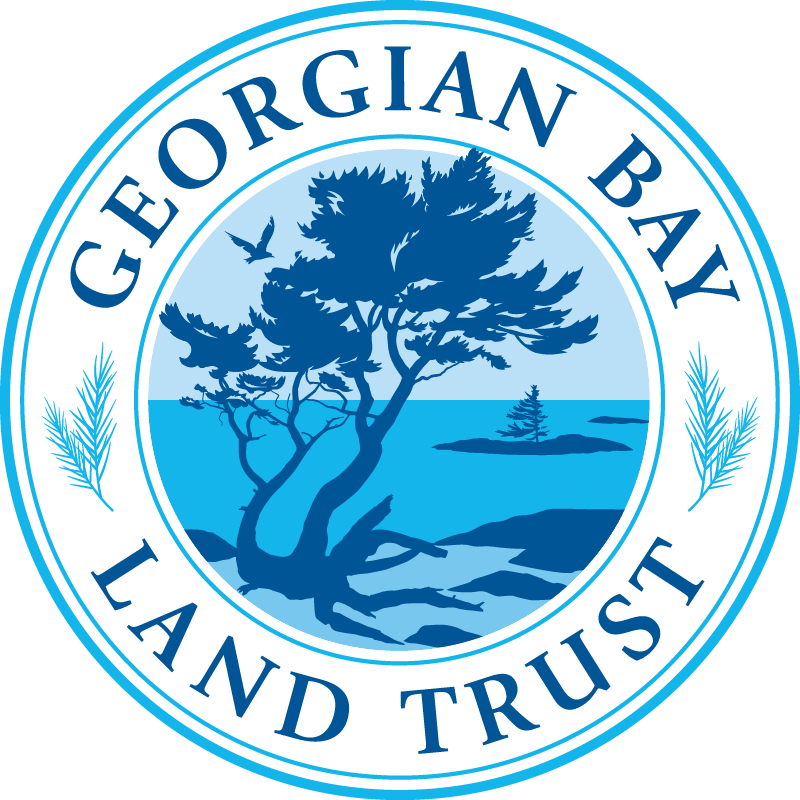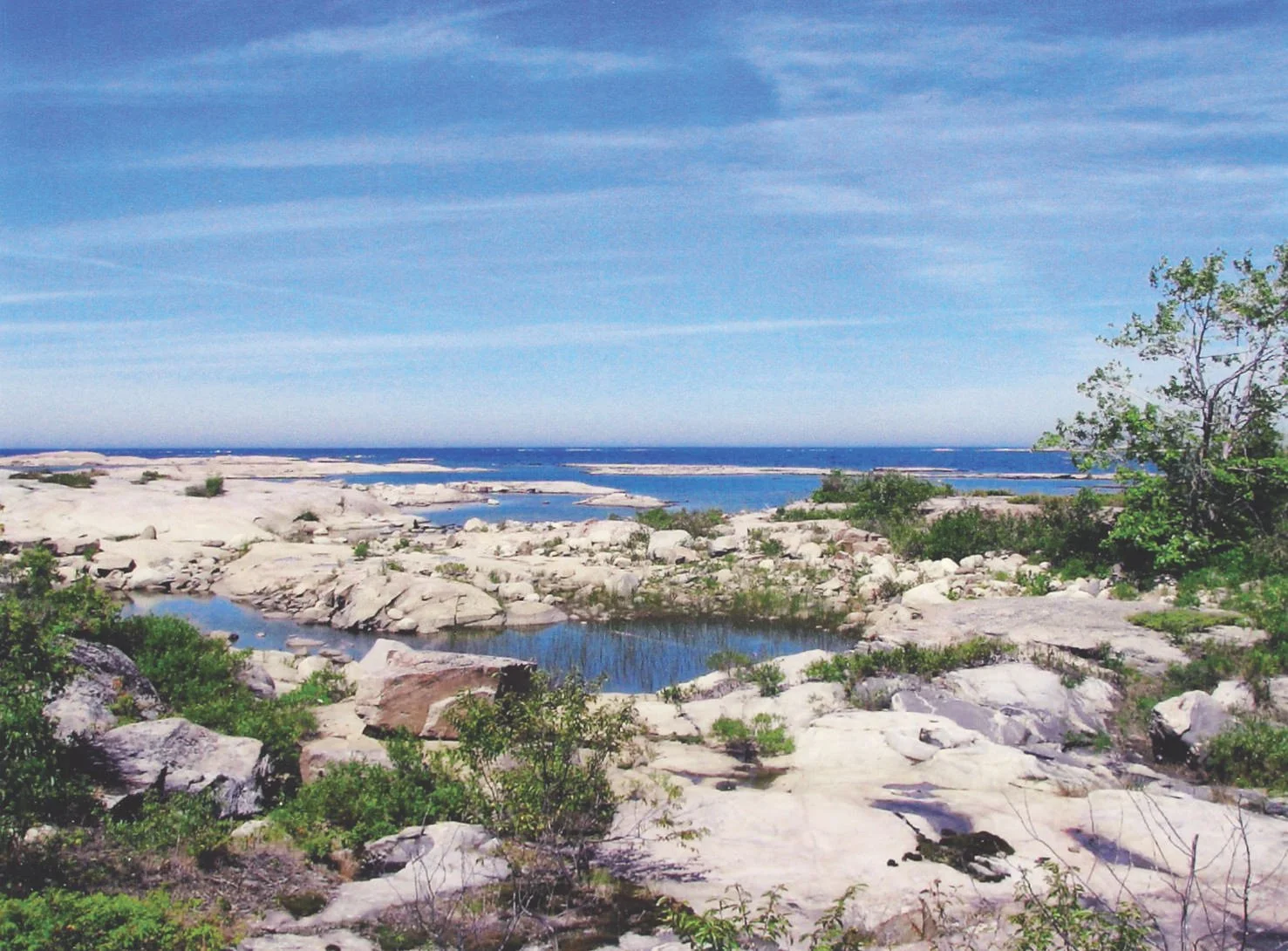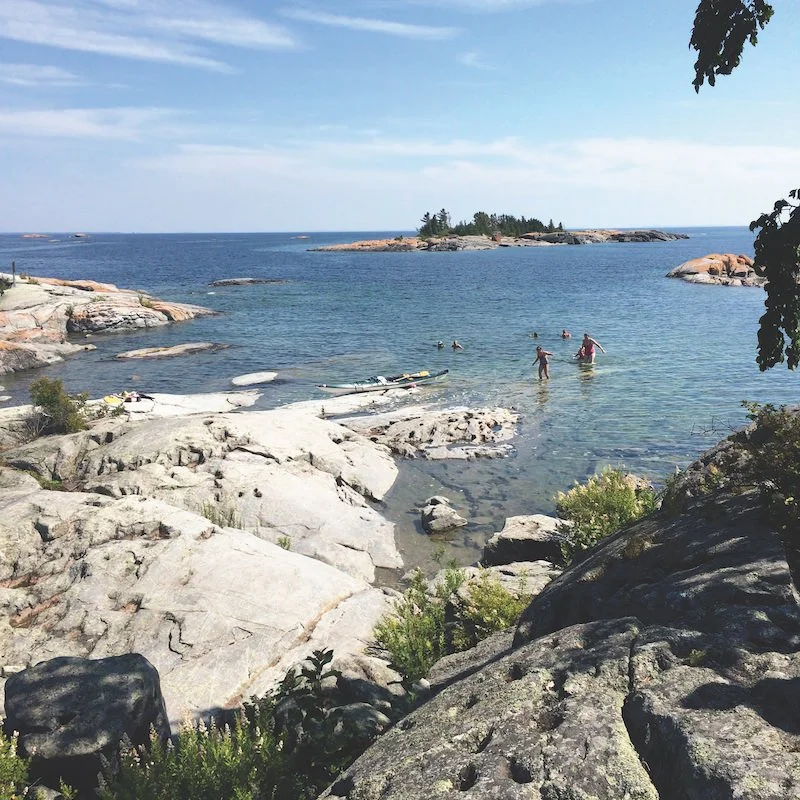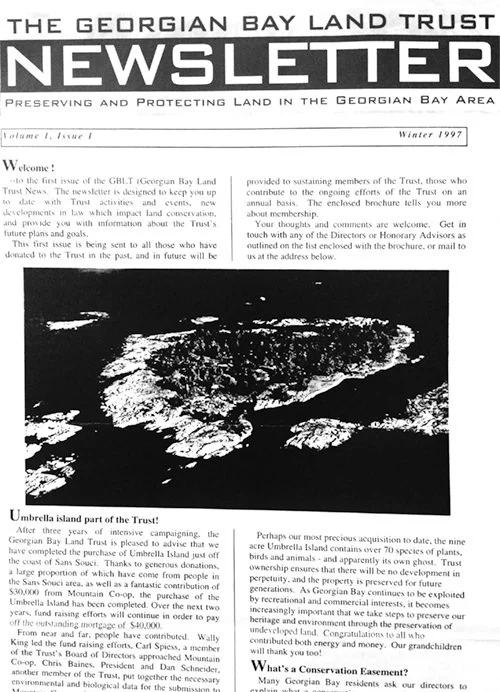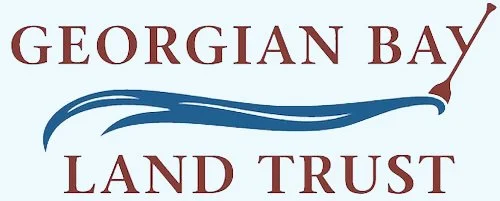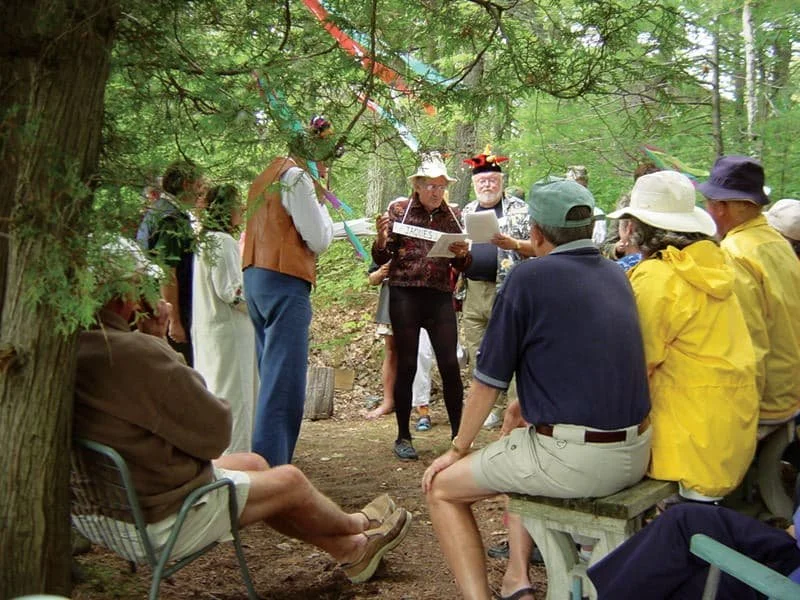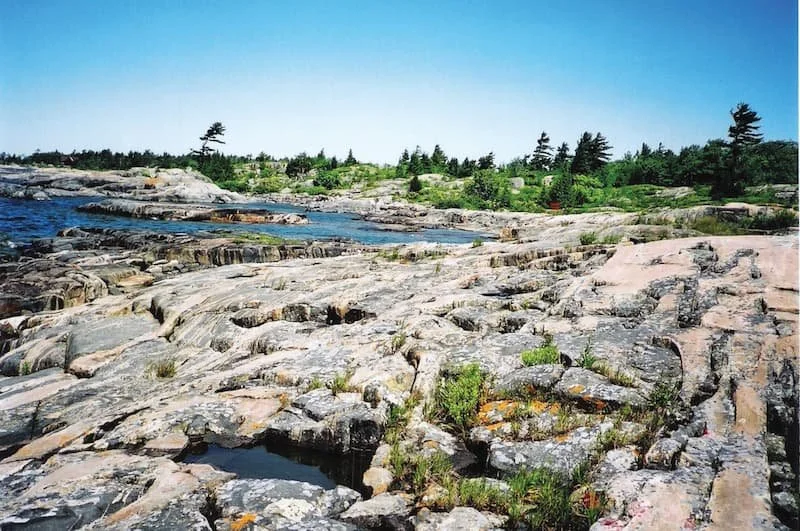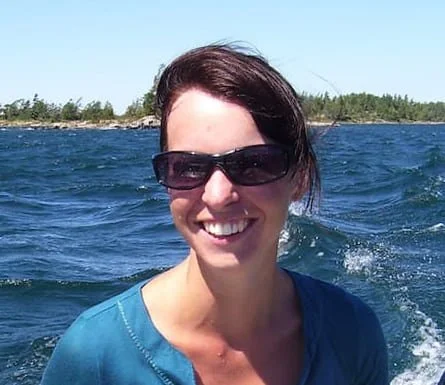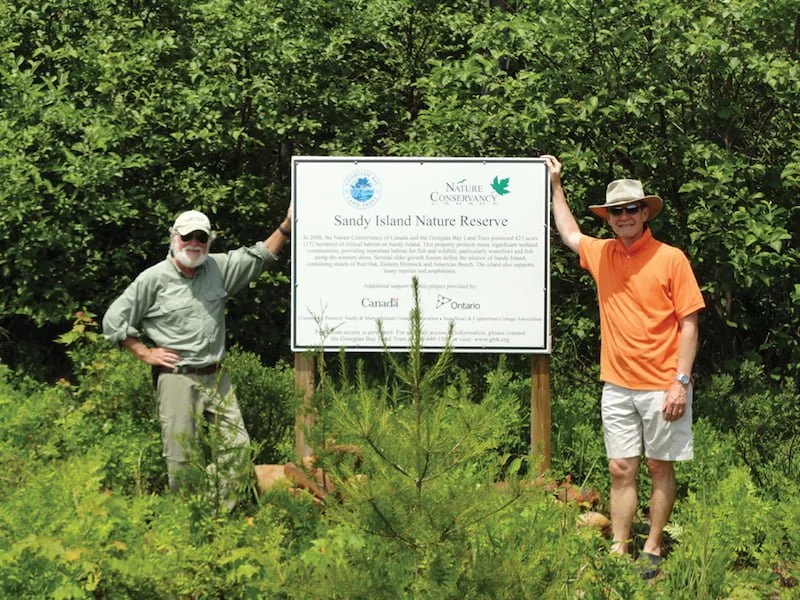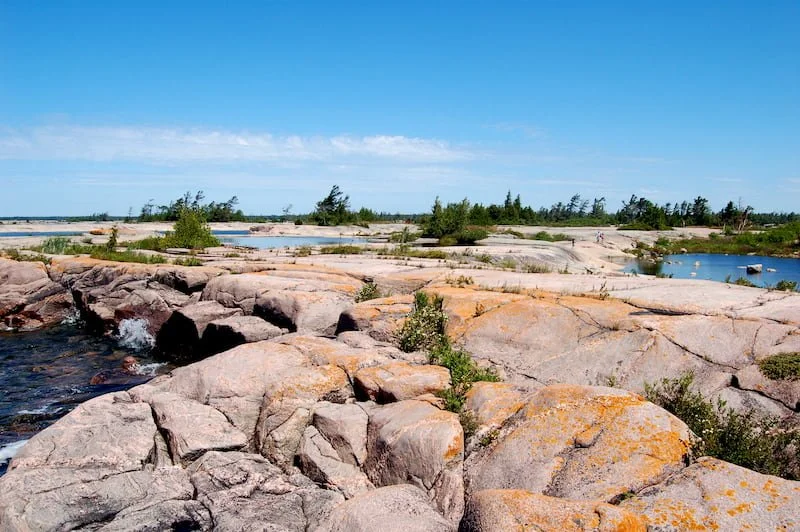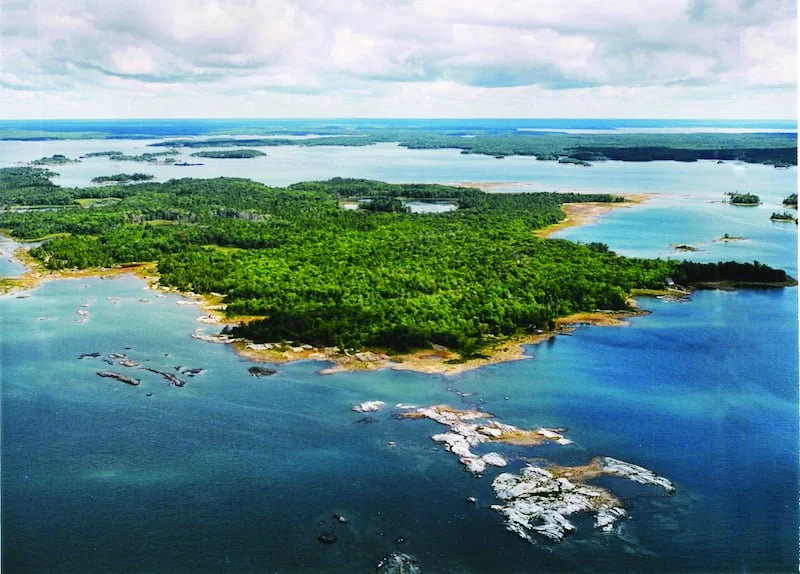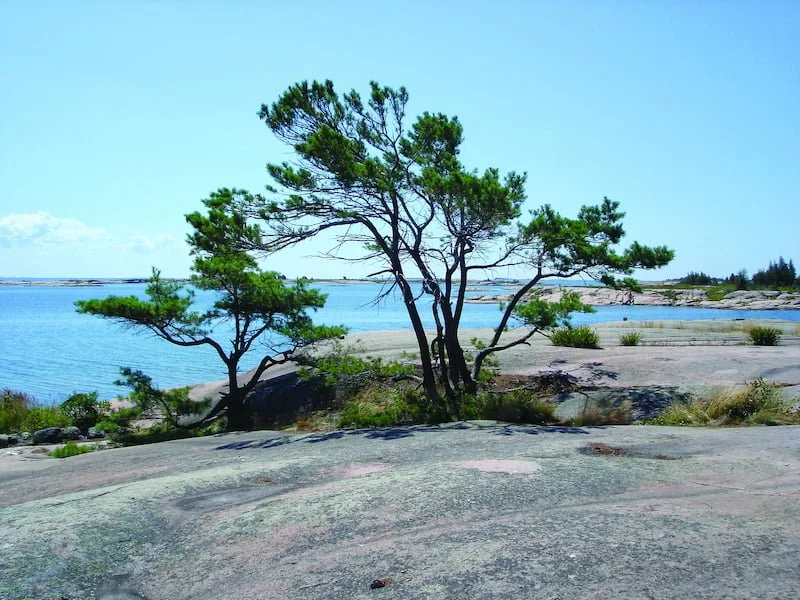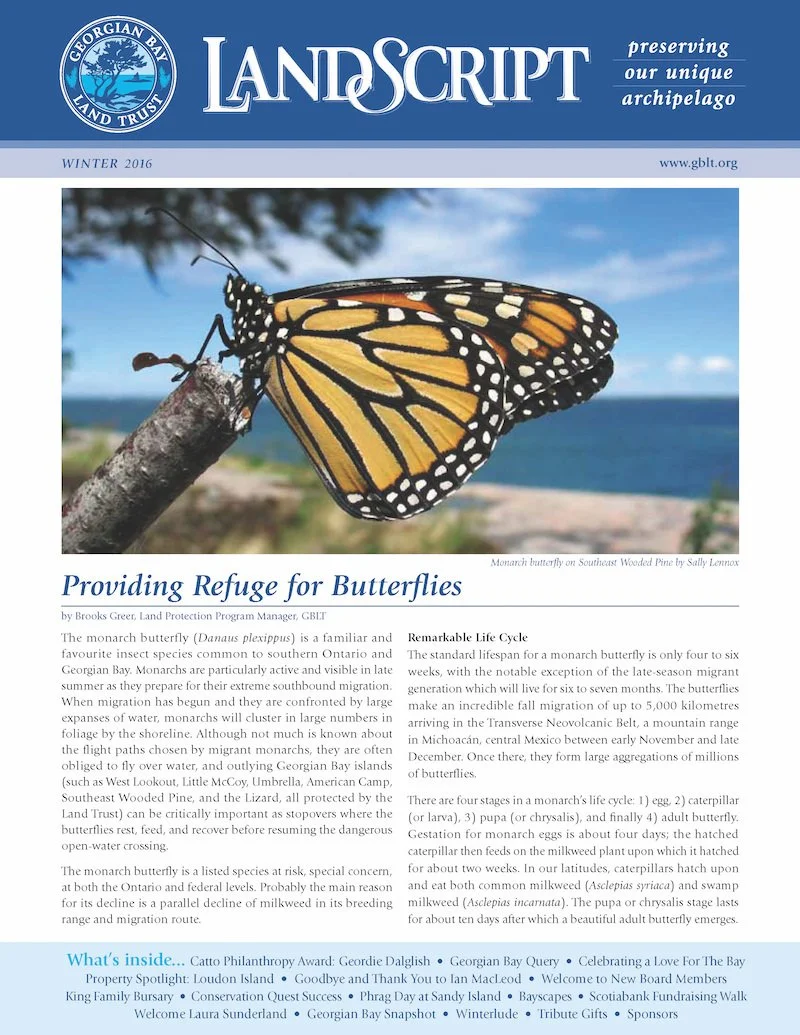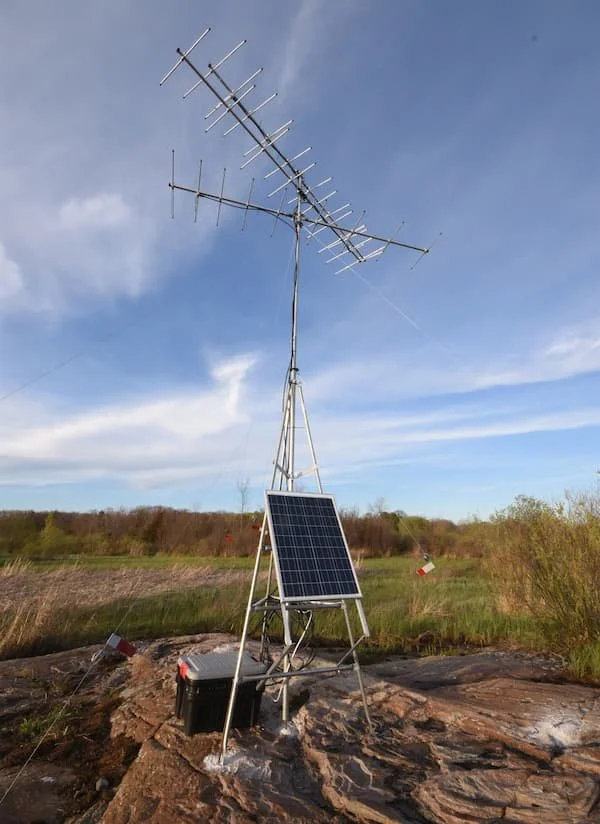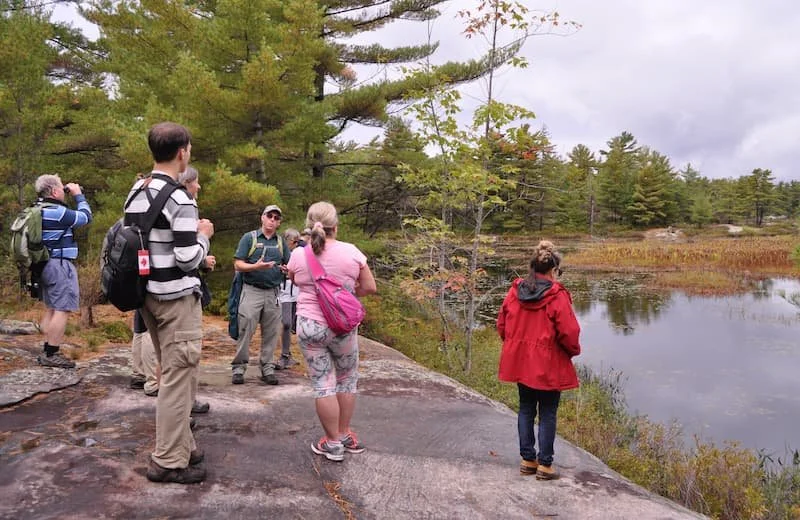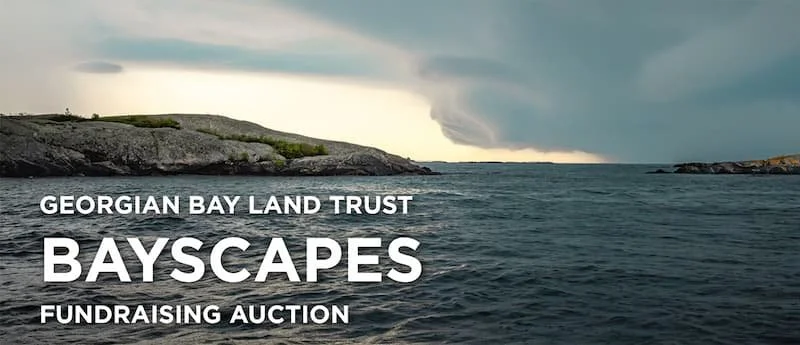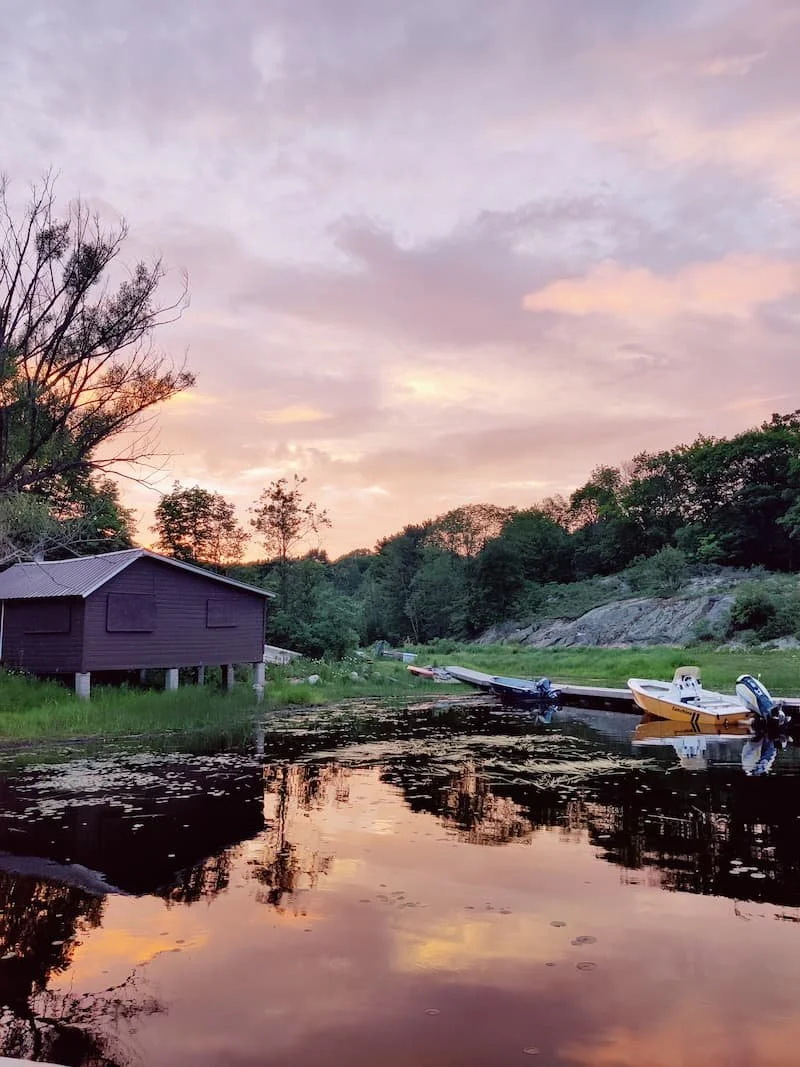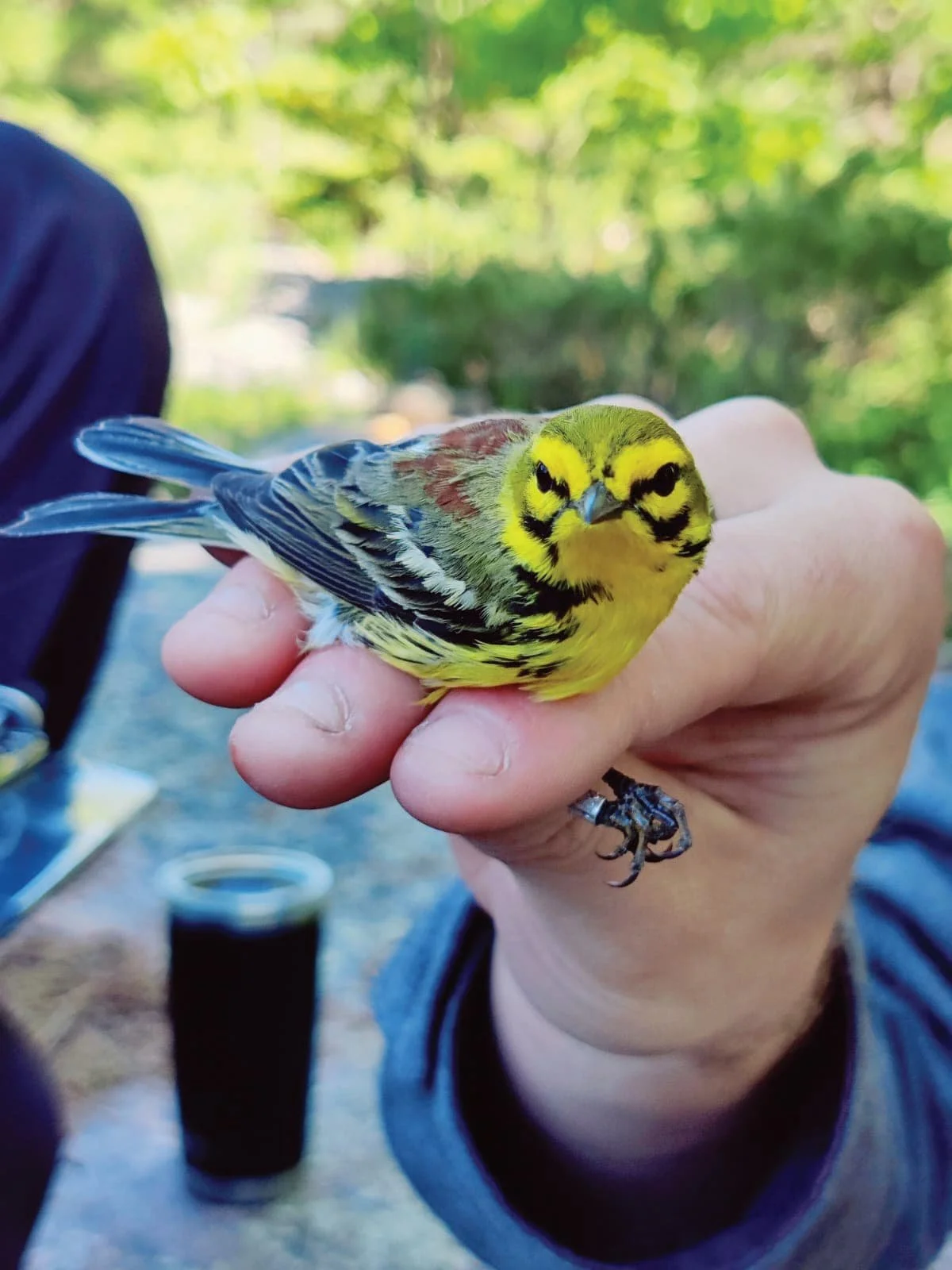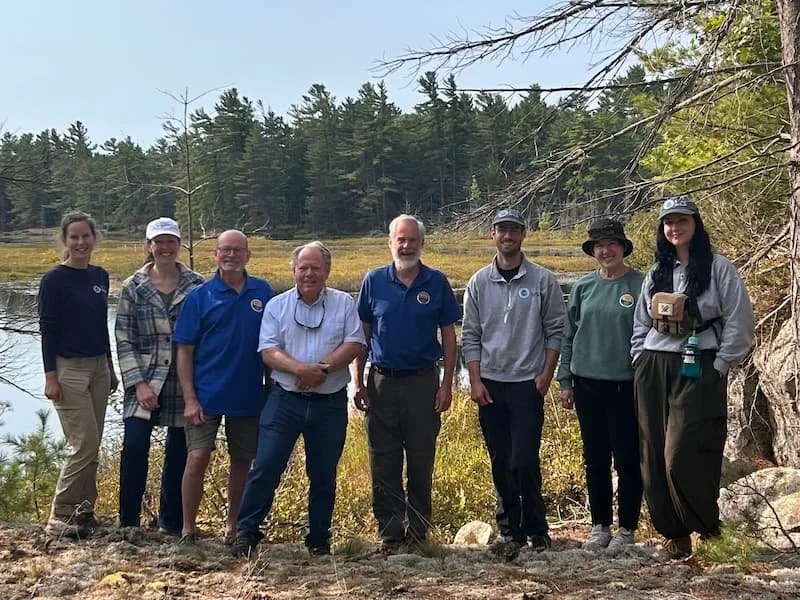// OUR HISTORY
Conservation on Georgian Bay
The Georgian Bay Land Trust was founded in 1991 by a group of passionate volunteers who wanted to see Georgian Bay’s natural places preserved forever. We’ve grown a lot since then! Here are some highlights from our 30+ years of protecting Georgian Bay’s wilderness lands.
1991
1993
1997
1999
2002
2005
2007
2013
2017
2019
2022
2023
2024
2025
On January 31, the Georgian Bay Trust Foundation, Inc. is officially registered as a charitable organization. In April, the Trust receives its first major gift: a $10,000 donation from members of the Sans Souci Copperhead Association in memory of long-time Georgian Bayer Elmer I. Phillips. Pictured: Founding directors Wally King and Stephen Griggs
The Land Trust receives its first two properties: Friend Island, a 3.6 acre island at the south end of Pointe au Baril significant for its coastal meadow marshes, and a ¾ acre island in Nares Inlet which began the Thomson Reserve
Dedication ceremony for Friend Island, officiated by Hon. Hal Jackman, then-Lieutenant Governor of Ontario.
Partnership work begins with the Nature Conservancy of Canada, later leading to key accomplishments such as our Natural Area Conservation Plan and the protection of Southeast Wooded Pine Island, West Lookout Island Reserve, and Little McCoy Island.
1998
2003
2008
2011
2012
2021
The generosity of the local community enables the Land Trust to protect Sans Souci’s Umbrella Island, our 5th protected property.
Our first logo!
The Kemerer family hosts their first Shakespeare on the Rocks fundraiser in support of the Land Trust.
Truax Island in Sans Souci, notable for its spectacular multi- coloured gneiss and feldspar, becomes the Land Trust’s first conservation easement.
The first fundraising art auction takes place in Sans Souci, a precursor to today’s Bayscapes events.
The Land Trust hires Wendy Cooper as our first full-time Executive Director.
Our Stewards program launches with 15 volunteers monitoring our protected wilderness properties. Today, more than 100 volunteers serve as stewards.
Andrew Williams of Go Home Bay is our first Summer Conservation Intern. The Land Trust now trains two interns each year to help monitor our protected properties and deliver education and outreach programming along the Bay.
Our current logo is launched as part of a refresh of our overall identity.
The first scientific research project takes place on a Georgian Bay Land Trust property. Dr. Pat Chow-Fraser and her students from McMaster University conduct studies on wetlands and water quality at the Oldfield Lake Reserve.
We are entrusted with the conservation of American Camp Island, a beloved community place for generations. American Camp is now the Georgian Bay Land Trust’s most visited property, welcoming hundreds of guests every summer to enjoy its flat pink rocks, clear waters, and wide-open views.
In partnership with the Nature Conservancy of Canada, we develop a Natural Area Conservation Plan for the eastern Georgian Bay coast, which uses scientific data to establish a guide for future conservation work.
One of the most ecologically significant islands in the entire archipelago, the 425 acre Sandy Island is protected by the Land Trust. This was our 18th protected property, and it is still our largest.
Patrick Stark embarks on his Paddle for the Bay fundraiser, a 40 day journey that raised over $7,500 for the Land Trust.
Geologist Dr. Nick Eyles leads the first rock walk at the Pancake Islands in West Carling - a much-loved summer tradition for many years.
Our first regular newsletter is introduced, thanks to the hard work of Nancy Christie. By 2000, it is named LandScript and is still published twice yearly.
Generous commitments from the McCoy family, the local community, and the federal government through the Nature Conservancy of Canada help the Land Trust protect the 35 acre Little McCoy Island in Pointe au Baril, bringing our total number of protected properties to 35. Little McCoy is an important stopover site for birds migrating along the coast and home to a number of species-at-risk.
2014
2016
2020
Conservation Quest launches. This program engages children aged 8-12 in fun, educational activities to help them become better ambassadors for the Bay and our environment. So far more than 1000 children have taken part in the program.
Writer Andrea Curtis and printmaker Tim Laurin are the inaugural winners of the King Family Bursary. The bursary, awarded annually, supports projects that promote knowledge and appreciation of the eastern shore of Georgian Bay.
Phragmites removal efforts begin with a community cut and workshop at Sandy Island. We have tackled this invasive reed at a variety of locations ever since.
Our Executive Director Bill Lougheed goes to Ottawa, as part of a multi-year collaboration with other land trust leaders to shape funding for conservation through Canada’s Nature Fund. This work has resulted in millions of dollars of funding for land trusts across the country, and tens of thousands of acres protected.
We install the first two Motus wildlife tracking towers in eastern Georgian Bay, connecting our region to an international network of collaborative bird research.
The Land Trust protects our largest conservation property to date, the 5,400-acre Tadenac Conservation Initiative. This remarkably biodiverse area contains 70 distinct habitat types, and is a sanctuary for over 700 plant and animal species, including at least 32 species at risk. It is the Land Trust’s only protected place that conserves lakebed as well as land and coastal wetlands.
LandMark Speaker Series launches with in-person talks on topics in conservation. During Covid, this series would switch to offer engaging online talks from a variety of experts.
The Georgian Bay Land Trust partners with the Georgian Bay Biosphere, Shawanaga First Nation, Magnetawan First Nation, and other community partners to launch Maamwi Anjiakiziwin, a collaborative project to improve outcomes for species at risk. The project is chosen by Environment & Climate Change Canada to receive multi-year funding.
The first Walking for Wilderness fundraiser is held, raising over $11,000 for conservation.
Bayscapes goes virtual! Thank you to everyone who has helped make these online auctions such successful fundraisers since 2020.
Our Field Station is established with a lease on premises in Go Home Bay, dramatically expanding the number of visiting researchers and staff that we are able to host on Georgian Bay. An avian research team from Western University are the first guests.
The first-annual Big Day fundraiser takes place. Staff Aaron Rusak and Eleanor Proctor see 128 bird species in 24 hours, and raise $3,400 to support bird research and conservation
Our Executive Director Bill Lougheed helps found the Alliance of Canadian Land Trusts
We hire two research students and launch scientific studies on Prairie Warblers and Eastern Whip-poor-wills on Georgian Bay. This marks a turning point for the Land Trust, where we are able to design and conduct our own research studies on species most important to our work.
The Corridor Project, our most ambitious conservation vision yet, begins with the creation of the Southern Corridor. This conservation easement with Georgian Bay Township creates a protective buffer around 32,900 acres of undeveloped forests and wetlands, preserving habitat connectivity for thousands of species. The Corridor Project continues northward.
We’re in our 34th year protecting Georgian Bay’s wilderness lands. We have grown to protect 80 conservation properties and contributed to the protection of over 41,000 acres of wilderness. Our research projects advance conservation science, and our educational events engage the Georgian Bay community with our one-of-a-kind environment. Our work is supported by over 120 volunteer property stewards and an amazing network of volunteers and donors with a passion for Georgian Bay. Thank you all!
